Plantes
TEA TREE et IMMUNITE
14 novembre 2022
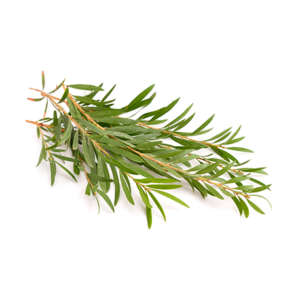
D’où vient le Tea Tree?
Pour les Aborigènes, cet arbuste australien de 5 m de haut possède des vertus curatives qu’ils utilisent depuis bien des générations.
Le Tea Tree (Melaleuca alternifolia), qui n’a pas de lien avec le Théier (Camellia sinensis) originaire d’Asie, devrait son nom à James Cook.
Les feuilles longues et étroites du Tea tree, qui font penser à des aiguilles de sapin, fort odorantes au froissement, auraient attiré l’attention de James Cook qui en aurait fait des tisanes. D’où son surnom « Tea tree ».
On l’appelle aussi Arbre à thé ou.. Mélaleuque à feuilles alternes…(1),(2),(3),(4)
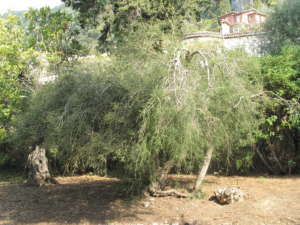
Durant la seconde guerre mondiale
Depuis les années 1920, ses propriétés antiseptiques et antibactériennes attirent l’attention de la médecine occidentale. Durant la Seconde Guerre mondiale par exemple, les soldats australiens portaient dans leur trousse de secours un flacon d’huile essentielle de Tea tree.(1),(2),(3),(4)
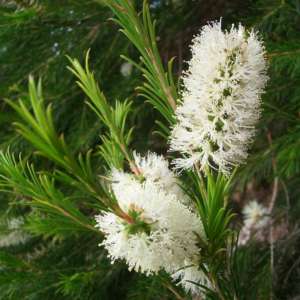
Ses vertus
Le Tea Tree a une action:
- antimicrobienne (5),(6),(7),(8),(9)
- antifongique (12),(13),(14),(15),
- antiparasitaire(16),(17),
- antibactérienne (18),(19),(20),(21),(22),(23)
- antivirale (25).
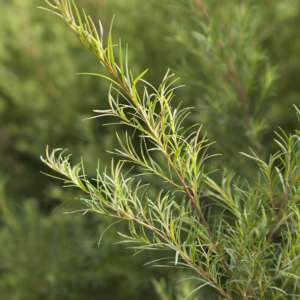
Étude: efficacité comme désinfectant pour les mains
Une étude de 2021 sur 112 adultes compare l’efficacité d’un désinfectant pour les mains à l’huile essentielle d’arbre à thé, d’autres désinfectants (éthanol, chlorure de benzalkonium ) et un groupe témoin n’ayant reçu aucun traitement.
L’étude confirme que le désinfectant à l’huile d’arbre à thé est efficace pour la désinfection des mains. Elle conclut : « En conséquence, les désinfectants à base d’huile d’arbre à thé peuvent être introduits dans la pratique infirmière en tant que nouveau produit d’hygiène des mains pour prévenir et réduire les infections nosocomiales. »(10).
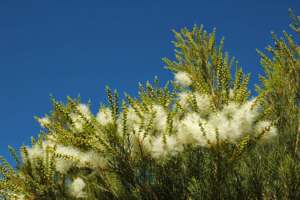
Étude: efficacité comme désinfectant buccal
Une autre qui portait sur trente sujets montre une activité antimicrobienne de l’huile essentielle de Tea tree contre les streptocoques mutants et d’autres micro-organismes buccaux.(11)
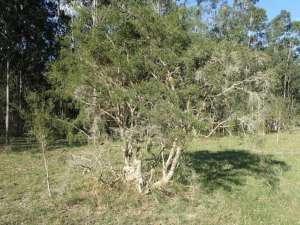
Étude: action antibactérienne
Une étude in vitro de 2021 montre que l’huile essentielle de Tea tree à comme action entre autres sur la bactérie Enterococcus faecalis de détruire sa membrane cellulaire. (24)
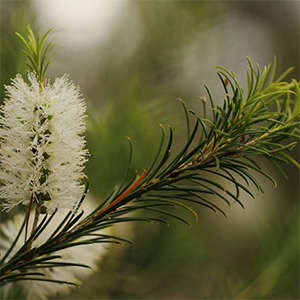
Études: action antivirale
Des études in vitro montrent qu’il a un effet inhibiteur sur la réplication du virus de la grippe A (H1N1)(26),(27),.
D’autres, toujours in vitro, démontrent que l’huile essentielle de Tea tree peut empêcher un virus de la grippe de pénétrer dans les cellules hôtes en perturbant la procédure normale de fusion de la membrane virale. (28).
Une autre étude in vitro indique que l’huile essentielle de Tea tree a une action sur le virus de l’herpès simplex avant ou pendant l’adsorption (mais pas après pénétration du virus dans la cellule hôte)(29).
Rappelons, l’importance de se renseigner sur les usages et contre-indications, même des produits naturels, auprès de professionnels de la santé.
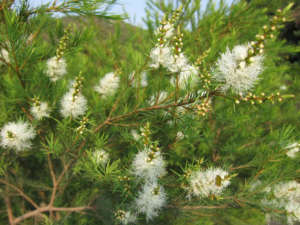
Sources
(1) L’arbre à thé : anti-infectieux puissant – le monde – https://jardinage.lemonde.fr/dossier-2818-arbre-the.html
(2) Guide pratique d’Aromathérapie familiale et scientifique par Dominique Baudoux – Amyris – 2011
(3) Arbre à thé (Tea tree) – dieteti-natura – https://www.dieti-natura.com/plantes-actifs/arbre-a-the.html
(4) Huile essentielle de Tea tree – Aroma-zone – https://www.aroma-zone.com/info/fiche-technique/huile-essentielle-tea-tree-arbre-bio-aroma-zone?page=library
(5) Survey of the antimicrobial activity of commercially available Australian tea tree (Melaleuca alternifolia) essential oil products in vitro, Per S Thomsen , Theis M Jensen, Kate A Hammer, Christine F Carson, Per Mølgaard, Thomas V Riley – J. Altern. Complement. Med. – 2011 – https://pubmed.ncbi.nlm.nih.gov/21854197/
(6) Effect of tea tree (Melaleuca alternifolia) oil as a natural antimicrobial agent in lipophilic formulations – Elisabeth Mantil, Grace Daly, Tyler J Avis – Can. J. Microbiol. – 2015 – https://pubmed.ncbi.nlm.nih.gov/25515896/
(7) In Vitro Antimicrobial Activities of Commercially Available Tea Tree (Melaleuca alternifolia) Essential Oils – Paola Brun , Giulia Bernabè, Raffaella Filippini, Anna Piovan – Curr. Microbiol. – 2019 – https://pubmed.ncbi.nlm.nih.gov/30421144/
(8) Antimicrobial effects of tea tree oil (Melaleuca alternifolia) on oral microorganisms – E Kulik 1 , K Lenkeit, J Meyer – Schweiz Monatsschr Zahnmed – 2000 – https://pubmed.ncbi.nlm.nih.gov/11374358/
(9) The mode of antimicrobial action of the essential oil of Melaleuca alternifolia (tea tree oil) – S D Cox 1 , C M Mann, J L Markham, H C Bell, J E Gustafson, J R Warmington, S G Wyllie – J. Appl. Microbiol. – 2000 – https://pubmed.ncbi.nlm.nih.gov/10735256/
(10) Antimicrobial and hand hygiene effects of Tea Tree Essential Oil disinfectant: A randomised control trial – Bock-Hui Youn , Yeon-Suk Kim , Seungmin Yoo , Myung-Haeng Hur – Int. J. Clin. Pract. -2021 – https://pubmed.ncbi.nlm.nih.gov/33950544/
(11) Antimicrobial activity of garlic, tea tree oil, and chlorhexidine against oral microorganisms – F C Groppo, J C Ramacciato, R P Simões, F M Flório, A Sartoratto – Int. Dent. J. – 2002 – https://pubmed.ncbi.nlm.nih.gov/12553397/
(12) Antimycotic activity of Melaleuca alternifolia essential oil and its major components – B Oliva, E Piccirilli, T Ceddia, E Pontieri, P Aureli, A M Ferrini – Lett. Appl. Microbiol. – 2003 – https://pubmed.ncbi.nlm.nih.gov/12859665/
(13) In vitro activity of Melaleuca alternifolia (tea tree) oil against dermatophytes and other filamentous fungi – K A Hammer , C F Carson, T V Riley – J. Antimicrob. Chemother. – 2002 – https://pubmed.ncbi.nlm.nih.gov/12161399/
(14) Antifungal effects of Melaleuca alternifolia (tea tree) oil and its components on Candida albicans, Candida glabrata and Saccharomyces cerevisiae – K A Hammer 1 , C F Carson, T V Riley – J. Antimicrob. Chemother. – 2004 – https://pubmed.ncbi.nlm.nih.gov/15140856/
(15) In vitro activity of Melaleuca alternifolia (tea tree) oil against bacterial and Candida spp. isolates from clinical specimens – L Banes-Marshall, P Cawley, C A Phillips – Br. J. Biomed. Sci. – 2001 – https://pubmed.ncbi.nlm.nih.gov/11575735/
(16) Activités antagonistes, in vitro, de quelques huiles essentielles et de composés naturels volatils vis à vis de la croissance de Trichomonas vaginalis – C. Viollon, D. Mandin, Jean-Pierre Chaumont Fitoterapia – 1996 – https://www.scinapse.io/papers/93384524
(17) Effect of tea tree oil (Melaleuca alternifolia) on the longevity and immune response of rats infected by Trypanosoma evansi – Matheus D Baldissera , Aleksandro S Da Silva, Camila B Oliveira , Rodrigo A Vaucher, Roberto C V Santos, Thiago Duarte, Marta M M F Duarte, Raqueli T França , Sonia T A Lopes , Renata P Raffin , Aline A Boligon , Margareth L Athayde, Lenita M Stefani , Silvia G Monteiro – Res. Vet. Sci. -2014 –https://pubmed.ncbi.nlm.nih.gov/24731531/
(18) Staphylococcus aureus and wounds: a review of tea tree oil as a promising antimicrobial – Linda Halcón , Kelly Milkus – Am. J. Infect. Control.- 2004 – https://pubmed.ncbi.nlm.nih.gov/15525915/
(19) In vitro activity of Melaleuca alternifolia (tea tree) oil against bacterial and Candida spp. isolates from clinical specimens – L Banes-Marshall , P Cawley, C A Phillips – Br. J. Biomed. Sci. – 2001 – https://pubmed.ncbi.nlm.nih.gov/11575735/
(20) Antimicrobial activity of the major components of the essential oil of Melaleuca alternifolia – C F Carson , T V Riley – J. Appl. Bacteriol. – 1995 – https://pubmed.ncbi.nlm.nih.gov/7730203/
(21) Plants of the Melaleuca Genus as Antimicrobial Agents: From Farm to Pharmacy – Javad Sharifi-Rad , Bahare Salehi, Elena Maria Varoni, Farukh Sharopov, Zubaida Yousaf, Seyed Abdulmajid Ayatollahi , Farzad Kobarfard, Mehdi Sharifi-Rad, Mohammad Hossain Afdjei, Majid Sharifi-Rad, Marcello Iriti – Phytother. Res. -2017 – https://pubmed.ncbi.nlm.nih.gov/28782167/
(22) The dynamics and mechanism of the antimicrobial activity of tea tree oil against bacteria and fungi – Wen-Ru Li, Hai-Ling Li , Qing-Shan Shi, Ting-Li Sun, Xiao-Bao Xie , Bin Song, Xiao-Mo Huang – Appl. Microbiol. Biotechnol. – 2016 – https://pubmed.ncbi.nlm.nih.gov/27388769/
(23) In Vitro Evaluation of the Antibacterial Properties of Tea Tree Oil on Planktonic and Biofilm-Forming Streptococcus mutans – Yu-Meng Song, Hong-Yan Zhou, Ye Wu, Jue Wang, Qian Liu, Yu-Feng Mei -AAPS PharmSciTech. – 2020 – https://pubmed.ncbi.nlm.nih.gov/32767025/
(24) Evaluation of the antibacterial effect of tea tree oil on Enterococcus faecalis and biofilm in vitro – Jianyan Qi, Min Gong , Rui Zhang , Yumeng Song , Qian Liu , Hongyan Zhou , Jue Wang, Yufeng Mei – J. Ethnopharmacol. – 2021- https://pubmed.ncbi.nlm.nih.gov/34450163/
(25) Intracellular Replication Inhibitory Effects of Tea Tree Oil on Vesicular Stomatitis Virus and Anti-inflammatory Activities in Vero Cells – Qi Shao, Junjie Huang, Jingui Li – Front. Vet. Sci. – 2021- https://pubmed.ncbi.nlm.nih.gov/34869732/
(26) In vitro antiviral activity of Melaleuca alternifolia essential oil – A Garozzo , R Timpanaro, B Bisignano, P M Furneri, G Bisignano, A Castro – Lett. Appl. Microbiol. -2009 – https://pubmed.ncbi.nlm.nih.gov/19843207/
(27) Activity of Melaleuca alternifolia (tea tree) oil on Influenza virus A/PR/8: study on the mechanism of action – A Garozzo , R Timpanaro, A Stivala, G Bisignano, A Castro – Antiviral Res. – 2011- https://pubmed.ncbi.nlm.nih.gov/21095205/
(28) Melaleuca alternifolia Concentrate Inhibits in Vitro Entry of Influenza Virus into Host Cells – Xinghua Li, Songwei Duan, Cordia Chu, Jun Xu, Gucheng Zeng, Alfred King-Yin Lam, Junmei Zhou, Yue Yin,1Danyun Fang, Maxwell John Reynolds, Huaiyu Gu, and Lifang Jiang – Molecules – 2013 – https://www.ncbi.nlm.nih.gov/pmc/articles/PMC6270578/
(29) Antiviral activity of Australian tea tree oil and eucalyptus oil against herpes simplex virus in cell culture – P Schnitzler , K Schön, J Reichling – Pharmazie – 2001 – https://pubmed.ncbi.nlm.nih.gov/11338678/
